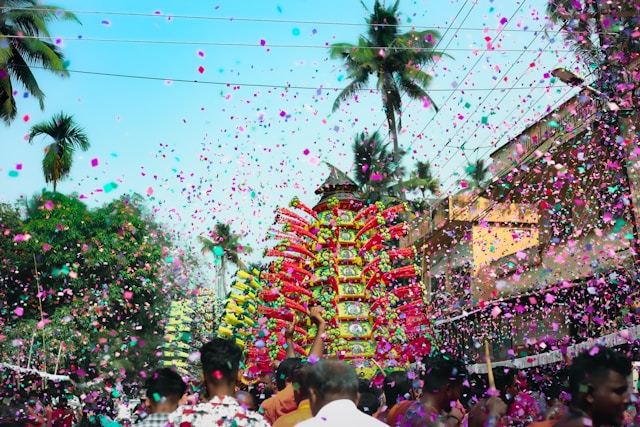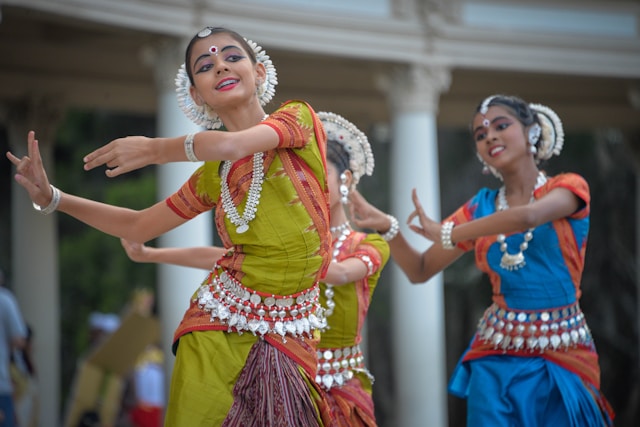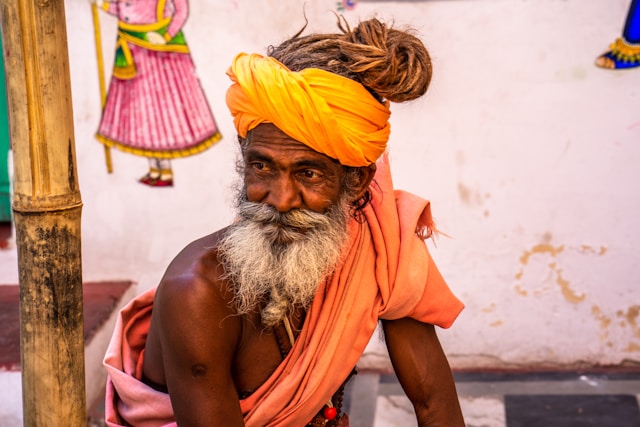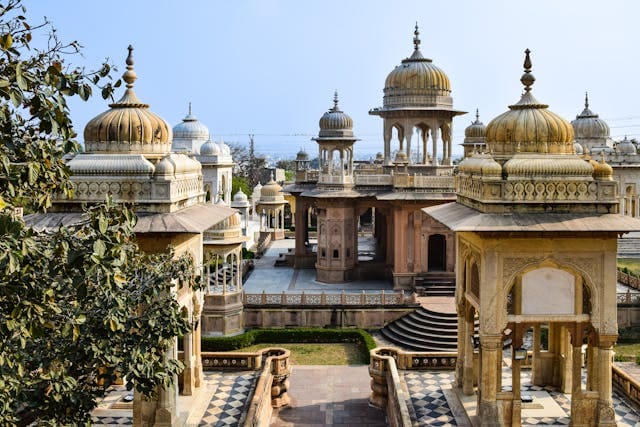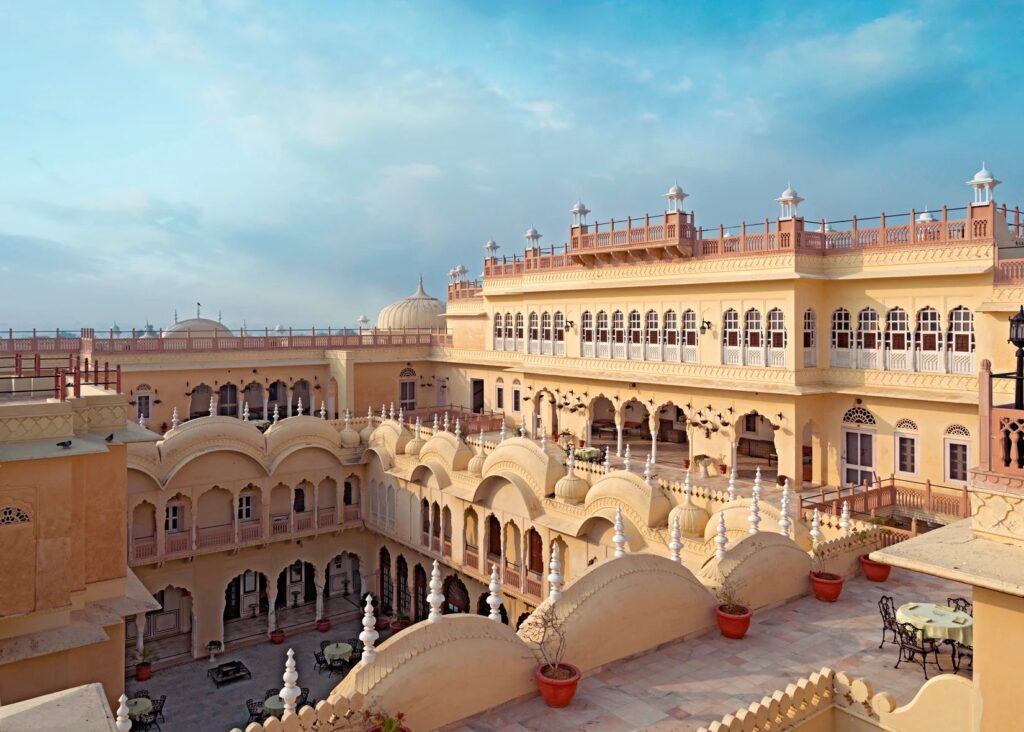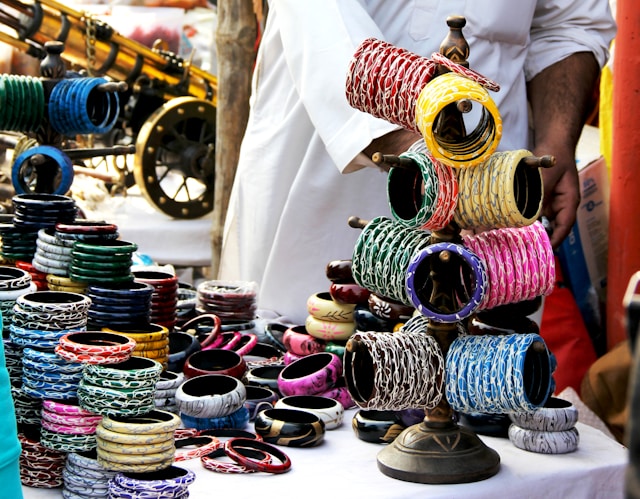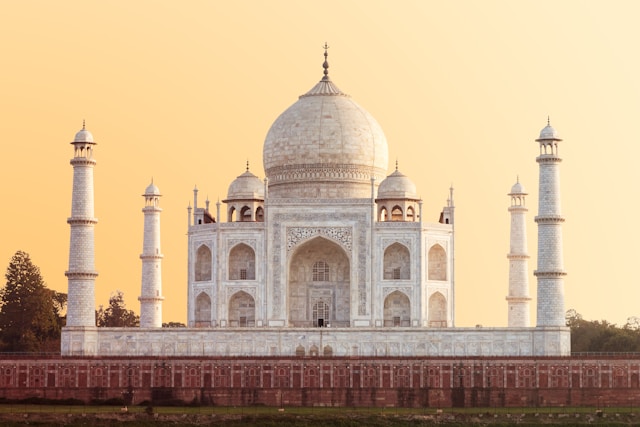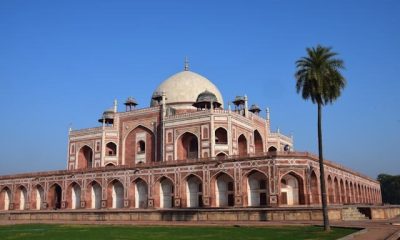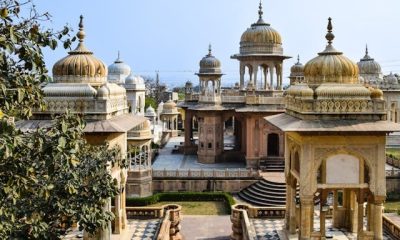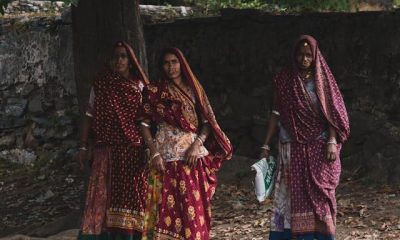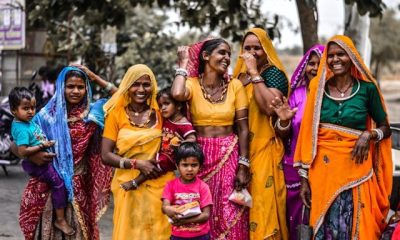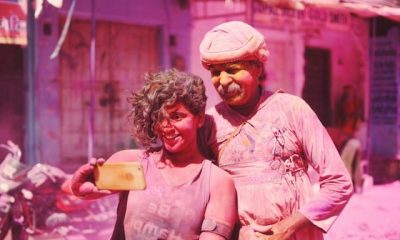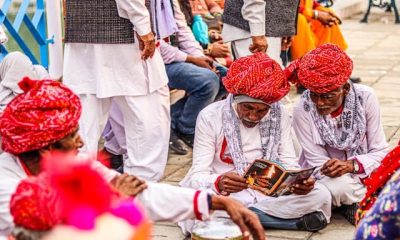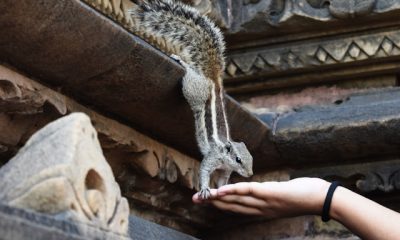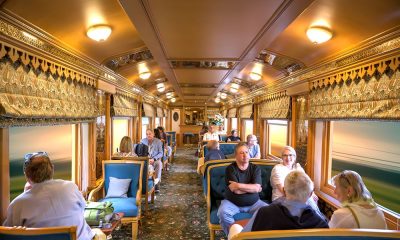Spiritual Tour India
From the sacred city of Varanasi to the divine birthplace of Lord Krishna, this meticulously crafted itinerary will take you on a transformative voyage through some of the country’s most revered destinations.
Highlights
- Explore the vibrant city of Jaipur and its architectural wonders
- Visit the holy town of Pushkar and its unique Brahma Temple
- Experience the divine energy of Vrindavan and Mathura
- Marvel at the iconic Taj Mahal in Agra
- Participate in soul-stirring rituals in Varanasi
Spiritual Odyssey
Your spiritual odyssey begins in Jaipur, where you’ll marvel at architectural wonders like the Amber Fort and the Jantar Mantar observatory. Venture into the desert landscapes of Pushkar, a holy town known for its unique Brahma Temple and serene Pushkar Lake.
Experience the divine energy of Vrindavan and Mathura, the birthplace of Lord Krishna, as you explore sacred sites like the Shri Krishna Janmabhoomi, Nidhivan Temple, and the ancient Dwarkadheesh Temple. Witness the unparalleled beauty of the Taj Mahal in Agra, a testament to eternal love and architectural brilliance.
The highlight of your journey awaits in Varanasi, the spiritual capital of India. Participate in soul-stirring rituals like the sacred Ganga Aarti and witness the mesmerizing sunrise over the holy Ganges River. Explore ancient temples, including the revered Kashi Vishwanath Temple, and delve into the city’s rich cultural heritage.
Insightful Guidance
Throughout your spiritual odyssey, you’ll be accompanied by knowledgeable local guides who will share insights into India’s profound spiritual traditions, ensuring a deeper understanding and appreciation of the places you visit.
A Life-Changing Experience
Whether you seek inner peace, spiritual enlightenment, or a profound connection with India’s sacred roots, this Spiritual Tour promises to be a life-changing experience that will leave an indelible mark on your soul.
Spiritual India
- Duration: 11 Days, 10 Nights
- Itinerary : Jaipur – Pushkar – Abhaneri – Vrindavan – Mathura – Varanasi – Sarnath – Delhi.
Travel Itinerary for Mrs. Flor Daneu and Group
Tour Date: 31. January 2024 – 10. February 2024
Pricing: (UNIT NETT PER PERSON RATES IN USD)
- Each of 6 paying pax double/twin sharing: USD 1330 per person
- Each of 8 paying pax double/twin sharing: USD 1170 per person
- Each of 10 paying pax double/twin sharing: USD 1125 per person
- Each of 12 paying pax double/twin sharing: USD 1055 per person
- Single Room Supplement: USD 395 per person
Services included:
- Services of accompanying Spanish-speaking Tour Guide from arrival till departure
- All ground transportation as detailed in the itinerary using air conditioned Vehicle
- Double / twin room with breakfast
- Monument entrance fee mentioned in the Tour Itinerary
- Transfer from Rishikesh to Dehradun Airport
- Domestic Airfare : Dehradun – Jaipur
- Domestic Airfare : Delhi – Varanasi
- Domestic Airfare : Varanasi – Delhi
- Sunrise & Sunset Boat ride in Varanasi
- Elephant / Jeep ride at Amber Fort in Jaipur
- Airport transfer on the last day in Delhi from Delhi Airport to Hotel
- Airport transfer in Delhi for the departure flight to the home country
- Water Bottles during the Tour
- Currently applicable taxes
Not included services:
- Visa application process and fees
- International airfares & taxesCamera and Video charges at the monuments where applicable
- Any expenditure of a personal nature such as drinks, tips, laundry, telephone charges,
- donations etc
- Insurances (travel cancellation insurance, health insurance etc)
- Any new tax imposed by the government
- Any chosen optional activity / Program
| CITY | HOTELS | NO. OF NIGHTS |
|---|---|---|
| Jaipur | The Wall Street Beacon | 2 |
| Pushkar | Pushkar Palace | 2 |
| Vrindavan | Hotel Country Inn | 3 |
| Varanasi | Surya Kaiser Palace | 3 |
| Delhi | Sarovar Portico Naraina | 1 |
ITINERARY
On-time transfer to Dehradun Airport for the Flight to Jaipur.
On arrival in Jaipur, greet, assist, and transfer to the Hotel in Jaipur.
JAIPUR - The fascinating capital of the marvelous state of Rajasthan. Jaipur is popularly known
as the Pink City, thanks to the color of its buildings. It was built in 1727 A.D by Maharaja Sawai
Jai Singh II followed a grid system, which made it the only planned city of its time. A young
Bengali architect Vidhyadhar Bhattacharya designed the city in accordance with Shilpa Shastra -
an ancient Hindu treatise on architecture. There are innumerable sagas and stories of culture,
traditions, practices, and valor. This diverse land of rich cultural heritage is a royal treat for tourists
all over the world.
Overnight at the Hotel in Jaipur.
After breakfast, drive to Pushkar.
The word Pushkar is a combination of 2 Sanskrit words: Pushpa (Flower) and Kar (Hand). As per the belief, as a Lotus Petal fell at this place from the Hands of Lord Brahma, it is called Pushkar. It is a Town bordering on the Thar Desert in Rajasthan state. The heart and soul of this town consist of Pilgrims coming to Pushkar on a pilgrimage. Pushkar is special to the Hindu pilgrims as in India there is only one temple dedicated to Lord Brahma and that Temple is located in Pushkar.
On arrival in Pushkar, check in at the Hotel and relax.
Later proceed to visit the following in Pushkar:
Brahma Temple
The fascinating Brahma Temple is built with marble and stones. As per the legend, Lord Brahma slew a demon named Vajranabha. After killing the Demon, he wished to perform a Yagna here but his consort Savitri couldn’t reach on time. As Savitri was not there, Lord Brahma decided to marry Gayatri and performed the Yagna with her. On seeing this, Goddess Savitri cursed Brahma that he wouldn’t be worshipped at any other place apart from Pushkar.
Pushkar Lake
Pushkar Lake or Pushkar Sarovar is a sacred lake for Hindu Pilgrims. There are several Ghats surrounding the Lakes which makes it a sight to behold. As per the Legend, Lord Brahma combined the Holy waters of several sites to form the Pushkar Lake. For this reason, Pushkar and Pushkar Sarovar hold paramount importance concerning spirituality.
Savitri Temple
One can experience a mini Trek while visiting the Savitri Temple. Savitri Temple offers breathtaking views of Pushkar town.
Overnight at the Hotel in Pushkar.
After breakfast in the Hotel, visit and stroll around the Pushkar Main Market.
The rest of the day is at leisure in Pushkar.
Optional: Desert Safari in Pushkar
Desert Safari in Pushkar is an optional activity. Recommended to visit at the time of Sunset, this is a possibility to experience a camel ride and witness the sunset in Pushkar from a Sand Dune.
Overnight at the Hotel in Pushkar.
After breakfast, drive further to Jaipur.
On arrival in Jaipur, visit the following: Photo stop at the Hawa Mahal Palace
The poet King Sawai Pratap Singh built this palace of winds. This is easily the most well-known landmark of Jaipur and is also its icon. This five-storey building overlooking the busy bazaar street is a fascinating example of Rajput architecture and artistry with its delicately honeycombed 953 pink sandstone windows known as 'jharokhas'. It was originally built for the ladies of the royal household to watch everyday life and processions in the city from their veiled comfort.
City Palace
Located in the heart of the walled city, the City Palace Complex gives you an idea about the farsightedness of the founder of Jaipur Maharaja Sawai Jai Singh II. He left behind a legacy of some of the ‘most imposing and magnificent architecture in the city. Maharaja Sawai Jai Singh II built many buildings but some of the structures were also built by later rulers. The palace is a blend of Mughal and Rajput architecture and the ex-royal family still lives in a part of the palace.
Jantar Mantar
The Jantar Mantar is a collection of architectural astronomical instruments, built by Maharaja (King) Jai Singh II between 1727 and 1734. It is modeled after the one that he had built for him at Delhi. He had constructed a total of five such facilities at different locations, including the ones at Delhi and Jaipur. The Jaipur Observatory is the largest and best preserved of these. It has been inscribed on the World Heritage List as "an expression of the astronomical skills and cosmological concepts of the court of a scholarly prince at the end of the Mughal period". Later in the afternoon, explore the local markets of Jaipur.
In the evening, enjoy the Aarti ceremony at Birla Temple.
The Lakshmi-Narayan Temple known as Birla Mandir is situated just below the Moti Dungari. This is a modern temple built of white marble on top of a hill, dominating the skyline of south Jaipur. The Birlas (industrialists who have also built several temples in India) built this temple. The temple has been constructed in white marble. The presiding deities here are Vishnu (One of the Hindu Trinity Gods) called Narayan and his consort Lakshmi, Goddess of wealth and good fortune.
Overnight at the Hotel in Jaipur.
After breakfast, visit the magnificent Amber Fort in Jaipur:
Elephant/Jeep ride at Amber Fort
Enjoy an Elephant ride up to the Amber Fort like the royalty of Rajasthan once did. Mount the animal from a raised platform and sit comfortably in a specially designed, secure seat as the majestic animal winds its way up the ramparts of the fort. The Elephants look beautiful as the mahouts (the person who drives the elephants) decorate them, especially the trunk, with floral and geometric patterns using colored chalk and powders.
Amber Fort
The Amber Fort set in picturesque and rugged hills is a fascinating blend of Hindu and Mughal architecture. Constructed by Raja Man Singh I in 1592 and completed by Mirja Raja Jai Singh, the fort was made in red sandstone and white marble. Amber is the classic and romantic fort-palace with a magnificent aura. The interior wall of the palace depicts expressive painting scenes with carvings, precious stones, and mirror settings. Built mainly for the warring enemies as a safe place, the heavily structured walls could defend the residents within the ramparts of the fort.
Later, drive further to Vrindavan. En route, visit Abhaneri.
Abhaneri
On the way to Jaipur, visit the village of Abhaneri. Abhaneri is a small village with a population of approximately 2,000 people. The village is known for Chand Baori Stepwell. Stepwells were very important in the past. The purpose was to collect the Rainwater. Stepwell Chand Baori is the largest in India.
After visiting Abhaneri, drive further to Vrindavan. On arrival, check in and relax in the Hotel.
Overnight at the Hotel in Vrindavan.
After breakfast, have a tour of Vrindavan and Mathura and visit the following:
Shri Krishna Janmabhoomi
Janmabhoomi is the holiest place in Mathura since it is believed to be the birthplace of Lord Shri Krishna. As per the belief, before the temple was commissioned by the great-grandson of Lord Krishna, it used to be a stone-walled prison cell of Lord Krishna’s uncle, King Kansa. At the Janmabhoomi, one can visit the room that represents the prison where Lord Krishna was born.
Nidhivan Temple
Probably one of the best places to visit in Vrindavan, Nidhivan Temple is a treasure trove for both pilgrims and nature lovers. Mainly surrounded by trees where the branches are either tangled with other trees or faced downwards, the locals believe them to be gopis, the queens of Sri Krishna. It is also said that as soon as the sun sets, no one is allowed to stay back because Krishna and Radha along with the gopis perform Raas-Leela at Nidhivan.
Prem Mandir
Prem Mandir, which means Temple of Love, is dedicated to Sri Krishna and Sita Ram and is beautifully built with white marbles. The Temple is an architectural wonder and displays the history of Sanatana Dharma. Inside the temple, there are many portraits of Krishna Leela, Govardhan Parvat Leela, and Krishna Kaliya Naag Leela as well.
Gita Mandir
Gita Mandir is one of the most beautiful Temples to visit. It has the carvings of Lord Krishna’s preaching to his disciple, the Pandava Prince Arjuna during the Kurukshetra War period. 18 chapters of the Bhagavad Gita inscribed on the pillars can be witnessed at the entrance of the Temple. The Temple displays a mix of Hindu and Western styles of architecture with the idols of Lord Krishna, Narayana, Rama, Goddess Lakshmi, and Sita.
Dwarkadheesh Temple
Dwarkadheesh Temple is the oldest and one of the most famous temples in the region. The temple is called Dwarkadheesh because Lord Krishna moved to Dwarka to settle there until his last breath. The Temple houses the idol of Radha-Krishna in the main shrine. The entrance of the Temple is adorned with a Rajasthani style of architecture with an open courtyard in the center along with beautifully carved pillars and painted ceilings.
Overnight at the Hotel in Vrindavan.
After breakfast at the hotel, embark on an excursion to Agra.
AGRA - The city of the inimitable “TAJ MAHAL”.
The architectural splendor of the mausoleums, the fort, and the palaces is a vivid reminder of the opulence of the legendary Mughal Empire. While its significance as a political center ended with the transfer of the capital to Delhi in 1634 by Shah Jahan, its architectural wealth has secured its place on the international map. A pleasant town with a comparatively slow pace, Agra is known for its superb inlay work on marble and soapstone by craftsmen who are descendants of those who worked under the Mughals.
On arrival in Agra, proceed to visit the Taj Mahal.
Taj Mahal
Taj Mahal or Crown of Palaces is a white marble mausoleum, built by Mughal Emperor Shah Jahan as a memorial to his beloved wife Mumtaz Mahal. A world-renowned wonder, the Taj Mahal looks the same from all four sides and is widely recognized as "the jewel of Muslim art in India and one of the universally admired masterpieces of the world's heritage". The Taj Mahal is phenomenal not only in beauty but also in the deep planning and design that went into its making. This enchanting mausoleum started in 1631 and it took 22 years to complete with the help of an estimated 20,000 workers. (It remains closed on Fridays).
Later, after the visit, travel back to Vrindavan.
Overnight at the Hotel in Vrindavan.
On-time transfer to the New Delhi Airport to board the flight for your next destination Varanasi. On arrival in Varanasi, greet, assist, and transfer to the Hotel in Varanasi.
Rest of the day is at leisure.
Overnight at the Hotel in Varanasi.
The day will start with an early morning Boat ride on the River Ganges.
The western banks of the Ganges have a string of Ghats – a chain of stone steps, all built with pavilions, palaces, and terraces, most of which are mainly used as Dharamsala where the pilgrims stay during their visit to the holy City.
At dawn, the Ghats are abuzz with activity of the devotees performing their ablutions in the River or offering prayers to the rising Sun and performing other religious rituals. A Boat ride along the Ghats gives you vantage views of this activity. The Sunrise on the Ganges is a soul-lifting experience.
After the boat ride, come back to the Hotel for breakfast and some rest.
Later, have an excursion to Sarnath.
Sarnath - 10 kilometers away from Varanasi is Sarnath, which bears testimony to its great past where Lord Buddha delivered his first sermon to his disciples, expounding the principles of Buddhism. The remains date back to as far as the 3rd century BC when Emperor Ashoka founded various institutions, stupas, monasteries, and pillar Edicts. Visit the art collection at the Archaeological Museum (Museum closed on Friday). The main attraction is the superb Capital from Ashokan Pillar – the Ashokan symbol of four back-to-back Lions which has been adopted as the state symbol of Independent India. Also, visit the Mahabodhi Buddha Temple and walk around the Deer Park. Later, see the Monastery ruins area,
Dhameka Stupa.
After the visit to Sarnath, travel back to Varanasi.
In the evening, experience the Sunset Boat ride at the Ghats. Temples are lit with oil-lamp lights or candles. Participate in an Arti Ceremony (collective prayer) and watch the floating Diyas (oil lamps) on the river Ganges.
Overnight at the Hotel in Varanasi.
After breakfast, visit the following in Varanasi:
Bharat Mata Temple
A unique Temple dedicated to Bharat Mata (Motherland of India). The Temple features a statue of Bharat Mata as a goddess and showcases the history and culture of India. The Temple was built by a freedom fighter as a symbol of unity and national pride.
Sankat Mochan Mandir
The Temple is dedicated to Lord Hanuman and is situated on the banks of Maa Ganga. It is believed that the Temple was built by the great saint and poet Goswami Tulsidas in the 16th century. It is known for miraculous healing powers and it is said that those who pray at the Temple will have their troubles and worries removed.
Tulsi Manas Temple
The Temple is dedicated to Lord Rama. It is believed that visiting the Temple will help to purify the mind and bring peace to the soul. Visitors can participate here in the daily prayers and rituals.
Annapurna Devi Temple
The Temple is dedicated to the goddess Annapurna, the goddess of food and nourishment. Goddess Annapurna is considered to be the provider of food and sustenance to the entire world. The Temple is also known for its intricate carvings and beautiful architecture. It is believed that the Temple was built by a King who had been blessed with a good harvest after praying to Goddess Annapurna.
Optional: Early morning Walking Tour at Old Kashi (Old Varanasi)
During the early morning walking Tour, you’ll be able to experience some of the oldest markets and narrow streets of Varanasi (Kashi).
The Tour will be for around 2-3 hours and bring you through some Ghats, markets, and Lord Kaal Bhairao Temple, who is believed to be the Police Chief of Varanasi.
On-time transfer to the Varanasi Airport for your flight to Delhi.
On arrival in Delhi, transfer to a Hotel nearby the Airport where you’ll have a Hotel room for a few hours before departure and end the journey with a farewell dinner.
Later, on time transferred to the Delhi International Airport to board a flight back home.
End of Services
GALLERY / PHOTOS
MORE PACKAGES
OTHER TRAVEL PACKAGES




